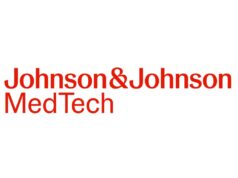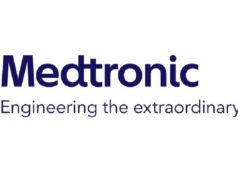
The use of middle meningeal artery (MMA) embolisation alongside standard care has been deemed superior to standard care alone for patients with symptomatic, non-acute subdural haematomas (SDHs), as per the findings of the MAGIC-MT randomised controlled trial (RCT). Ying Mao (Huashan Hospital/Fudan University, Shanghai, China) delivered first-time data from the trial at the recent International Stroke Conference (ISC; 7–9 February, Phoenix, USA), detailing less haematoma recurrence/progression and lower mortality at 90 days with MMA embolisation.
Mao noted in concluding his ISC 2024 presentation that, despite providing evidence favouring MMA embolisation in the treatment of non-acute SDH, these results “also need confirmation in further clinical trials”.
MAGIC-MT—a multicentre, prospective, open-label, parallel-group trial with blinded-outcome assessment—sought to ascertain the superiority of MMA embolisation with the Onyx liquid embolic system (Medtronic) versus conventional treatment approaches involving burr-hole drainage surgery and/or medical management. A total of 727 patients with a symptomatic, non-acute SDH were planned for enrolment and 1:1 randomisation to receive either MMA embolisation plus standard care, or standard care alone (control group), across 31 centres in China.
The trial’s primary endpoint was the rate of any death, symptomatic SDH recurrence or progression within 90 days (±14 days) post-randomisation. Secondary effectiveness endpoints included a number of clinical, radiographical and health-economic outcomes between the two groups, ranging from SDH recurrence/progression at one year and modified Rankin scale (mRS) score changes, to changes in haematoma thickness, volume and midline shift at 90 days. Serious adverse events (SAEs), SDH-related mortality, and severe surgery-related complications within 30 days, were among safety endpoints.
Presenting key data on behalf of the MAGIC-MT researchers, and his co-principal investigator Jianmin Liu (Changhai Hospital/Naval Medical University, Shanghai, China), Mao initially reported that—from March 2021 to May 2023—a total of 722 patients were ultimately included in the study analysis. He also relayed no significant difference between the two study groups regarding baseline characteristics, including a median age of close to 70 years and more than 80% of patients being male in both.
As per MAGIC-MT’s primary endpoint, 7.2% of patients in the MMA embolisation group experienced primary endpoint-related outcomes at 90 days, comparing favourably to 12.2% in the control group. All-cause mortality at 90 days was also lower in the MMA embolisation group, with just two deaths occurring—a rate of 0.6%—compared to eight (2.2% rate) in the control group, although this difference was not deemed statistically significant.
Many of the trial’s secondary effectiveness endpoints indicated overall equipoise between MMA embolisation and standard care, with Mao conveying similar median mRS scores at 90 days, near-identical quality-of-life outcomes (mean EQ-5D-5L score) at 90 days, and only minor differences in average length of hospital stay and rehospitalisation rates, across the two groups. No statistically significant discrepancies were observed regarding radiological outcomes including changes in haematoma thickness, volume or midline shift either.
Mao did, however, place emphasis on an “extremely high success rate” of 98.3% with the MMA embolisation procedure across the 360 patients randomised to the study’s intervention arm. In addition, only three MMA embolisation-related complications—one instance of facial nerve paralysis and two allergic reactions to contrast agents—were seen within 30 days in the intervention group, equating to a rate of 0.8%.
Touching on additional, safety-related outcome measures in the trial, the presenter noted that the SAE rate was 6.7% with MMA embolisation and 11.6% with standard care alone—a between-group difference adjudged to carry statistical significance. A broadly similar trend was observed in the rates of overall adverse events in the two groups, but this difference did not reach statistical significance (13.6% vs. 17.4%, respectively).
Towards the end of his presentation, Mao also shared subgroup analyses, as per MAGIC-MT’s primary effectiveness endpoint, stating that a larger treatment effect with MMA embolisation plus standard care was signalled in patients without surgical burr-hole drainage; in patients with known head trauma; and in patients with haematoma midline shift ≤10mm, and a haematoma volume lower than that of the Q3 subgroup of combined haematoma volume data.









